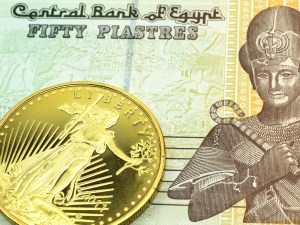Sovereign Fund Of Egypt And COVID-19 Opportunities: What Connects The Dots?

Recently, Saudi Arabia sovereign wealth fund (SWF) – The Public Investment Fund (PIF)- allocated US$40 billion from its foreign currency reserves to fund the purchase of US equities. Such equities include well-known blue chips such as Facebook (FB), UBER (UBER), Boeing (BA), and Citi (C). The news astonished the markets which analyzed it as a contrarian bet. Most investors were exiting equities and pouring funds into bonds and money market instruments. Later on, this proved to be a smart investment tactic by the PIF, taking advantage of both immediate and intrinsic arbitrage opportunities to maximize its investment returns. This raised global curiosity among analysts to shed further light on SWF’s and their investment role and tactics especially during economic crisis.
Egypt is no different from other countries in facing the challenges of the COVID-19 economic impact. Egypt established its first sovereign fund in 2018. In 2019, The Sovereign Fund of Egypt (ESF) was officially inaugurated with an authorized capital of EGP200 billion (US$12.35 billion) with an ambitious future target to increase to EGP1 trillion (US$61.76 billion).
SWF are categorized into three types- Stabilization, capital maximization, and economic development are the main broad criteria.In liaison with its legislative article of incorporation and latest amendments approved on the 8th June 2020, the ESF could be considered an economic development fund associated with flexibility in equities and bonds investments both locally and abroad. As stated in the ESF’s official website www.tsfe.com, it aims to attract private investments to Egypt and promote and co-invest in state-owned enterprises (SOE’s).
As depicted in Chart 1, the ESF has not yet announced its potential allocation among different assets. Will it follow the golden rule of 60/40 allocation among equities and bonds in its investment portfolio? Or maybe, will it give more weight to fixed income instruments stemming from ESF official statements in early 2020 to follow a more risk-averse direction as a result of the COVID pandemic?
(Click on image to enlarge)

What is known for sure is that ESF reprioritized its equities allocation to favor winning chips in sectors such as health care and food security as stated by the fund officials on the 8th June. Another solidified fact which was prior to the COVID outbreak is that the ESF signed different MoUs stipulating its investment appetite in alternative assets especially private equity and venture capital assets. One MoU was signed with the Abu Dhabi Investment Authority (ADIA) to establish a US$20 billion private equity platform. Another one was signed with companies owned by the National Service Projects Organization (NSPO), an economic arm of the Egyptian military, to promote its equity stake offerings. In addition, ESF will promote the designated SOE’s IPO with NI Capital through a contemplated partnership. All of these partnership strategies place the ESF more towards a capital maximization fund.
So what investment strategies could be deployed to take advantage of COVID-19 opportunities? Also, how could the ESF utilize Islamic finance products to maximize its risk-adjusted returns in the short term? Since the COVID-19 outbreak, Egypt has lost around US$10 billion of its foreign currency reserves. Such loss was partially countered by securing rapid funding from the IMF.
ESF could follow a quick arbitrage strategy to create a stabilization opportunity. Many international fixed income and Sukuk issuance are currently mispriced. Utilizing quantum trading based on smart beta techniques and Artificial Intelligence (AI) algorithms could easily capture the short term arbitrage. Same strategy could be deployed for mispriced international equities. Hence, following an active strategy of alpha creation instead of a passive index mimicking could partially help in generating fresh foreign currency returns.
Another strategy is utilizing the ADIA platform to provide indirect stimulus package to SME’s. This could be done by availing the Islamic product of Musharakah enticing Islamic investors to invest in the SME’s. Also, the ESF and the ADIA could issue SME Sukuk to provide the required debt funding. Hence, the ESF and the ADIA could tailor a comprehensive door to door funding for its platform.
Finally, there could be some challenges facing the ESF in its investment strategy such as lack of local derivatives enabling investors to hedge for their equity positions. This could be countered by actively continuing the launch of Egypt derivative market as designated by the end of 2020. Another challenge is the reluctance of some of ESG’s investors reluctance to participate in the NSPO offering.
According to statements from ESF officials on the 8th June, investors showed interest in such a portfolio. This could be analyzed in the context of promoting a portfolio of full stakes in military companies operating in civil strategic sectors such as food and beverage, road infrastructure projects, and healthcare manufacturing. In my humble opinion, the ESF is an ambitious move in Egypt’s economic development. Its equity portfolio could result in some rewarding and lucrative investments. So if you are an investor interested in return maximization, check out the ESF’s website to know more about its portfolio.
Disclaimer: This article was first published in Islamic Finance news Volume 17 Issue 26 dated the 1st July 2020.



